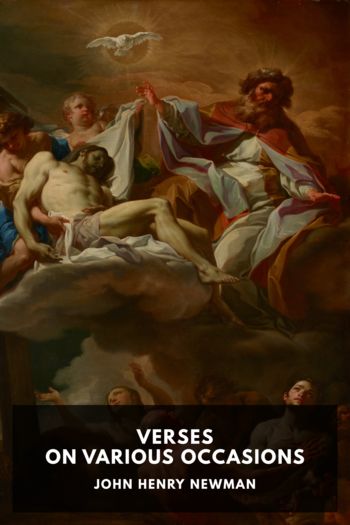Don Quixote Miguel de Cervantes Saavedra (mobile ebook reader .txt) 📖

- Author: Miguel de Cervantes Saavedra
Book online «Don Quixote Miguel de Cervantes Saavedra (mobile ebook reader .txt) 📖». Author Miguel de Cervantes Saavedra
By Lupercio Leonardo de Argensola. ↩
La Ingratitud Vengada, a comedy by Lope de Vega; La Numancia, a tragedy by Cervantes himself, first printed in 1784; El Mercader Amante, a comedy by Gaspar de Aguilar; and La Enemiga Favorable, by the licentiate Francisco Tarraga. ↩
The foreigners Cervantes alludes to here could only have been the Italians, who had made some efforts in the direction of dramatic propriety. There was no French stage at the time; and the English certainly did not “scrupulously observe” the laws he alludes to. ↩
The fertile wit was, of course, Lope de Vega, at whom, in particular, this criticism is aimed; and Cervantes shows great adroitness in the mode in which he has conducted his attack. There is hardly anything, however, which he says that Lope does not admit with cynical candor in the Arte Nuevo de Hacer Comedias, where he insists upon the right of the public to have nonsense if it prefers it, inasmuch as it pays. This chapter has a peculiar interest, not only as showing the views of Cervantes, but as furnishing an explanation of the bitter feeling with which he was unquestionably regarded by Lope and Lope’s school; a feeling that found expression a few years later in the attack made upon him by Avellaneda. Cervantes himself shortly afterwards in his comedies violated nearly all the principles he lays down here, and in the second act of the Rufian Dichoso solemnly reads his recantation. Much of what he says here is almost identical with what Sir Philip Sidney had said in the Apologie for Poetrie. ↩
E.g. Bradamante, Marfisa, and Antea, in the Orlando and Morgante Maggiore. ↩
Count Fernán González of Castile, the hero of many ballads, flourished in the tenth century; for Gonzalo Fernández, or Hernández, and Diego García de Paredes see notes to Chapter XXXII: García Pérez de Vargas is the hero of more than one ballad, but from the mention of Jerez it may be that Cervantes meant Diego Pérez de Vargas, who, at the siege of Jerez, performed the feat that got him the name of the Pounder. (See Chapter VIII.) Garcilaso is not the poet but an ancestor of his, known as “el del Ave Maria,” from having slain at the battle of the Salado a Moor who appeared with a label bearing the words “Ave Maria” tied to his horse’s tail; an exploit generally said to have been performed at Granada. Don Manuel Ponce de León was a knight of the time of Ferdinand and Isabella, who figures in the ballads of the Siege of Granada; for him see note to Chapter XVII Part II. ↩
The Princess Florides was the sister of Fierabras, and wife of Guy of Burgundy, a nephew of Charlemagne. The bridge of Mantible, referred to in the History of Charlemagne, was defended by the giant Galafre supported by the Turks, but carried by Charlemagne with the help of Fierabras. The Estremaduran peasants have given the name to the ruins of the old Roman bridge over the Tagus at Alconétar, north of Caceres. ↩
A romance of the Charlemagne series, originally written in Italian, but translated into Spanish in 1527. ↩
The history of Pierres and Magalona is a Provençal romance written in the twelfth century by Bernardo Treviez, and translated into Spanish apparently as early as 1519. ↩
The “dread horn of Roland,” Olifant, was, in fact, an elephant’s tusk. ↩
Juan de Merlo was a Portuguese knight in the reign of John II of Castile, whose deeds are celebrated by Juan de Menain the Laberinto (198, 199). ↩
Fernando de Guevara was another knight of the time of John II. ↩
The “Paso Honroso” was one of the most famous feats of chivalry of the Middle Ages. Suero de Quiñones, a knight of León, with nine others, undertook in 1434 to hold the bridge of Orbigo, near Astorga, against all comers for thirty days. Each was to break three lances with every gentleman who presented himself. There were 727 encounters and 166 lances broken. An account of it was written by a contemporary, Pero Rodriguez de Lena, secretary of John II, which was afterwards re-edited by Juan de Pineda, and printed at Salamanca in 1588 under the title of Libro del Paso Honroso. It is appended to the Crónica de Álvaro de Luna, Madrid, 1784. ↩
A knight of Navarre mentioned in the Crónica of John II and in Zurita’s Annals of Aragón. ↩
See note on Turpin, Chapter VII. ↩
No such title as Knight of the Twelve Peers ever existed. ↩
With regard to the Cid the





Comments (0)